Professional services marketing isn’t easy. You have to contend with offline conversions, long customer journeys and lead generation data gaps. We dissected data across our professional services clients to find key conversion trends and statistics for 2023.
Professional services can span accountancy, financial advisers and consultancies. While these businesses might be different in terms of customer, proposition and messaging, they have a few common threads.
Professional services have to drive new leads that a sales or customer service team convert into clients. With that comes competition in your niche, meaning businesses are fighting to get the best value leads from their marketing.
This is why knowing how you’re currently performing is so important. By understanding what’s working for you and your business, you can double down on it and maximise your output. Measuring your conversion rate from web traffic to leads is a common metric for professional services.
It allows you to benchmark your business against your competitors, and against yourself. You can accurately measure your marketing channels and campaigns and optimise based on real data.
Do you work in professional services marketing? While marketing often focuses on driving new leads, there’s more at stake. You need to drive new leads that will convert into clients. This can result in offline conversions, a large advertising budget and difficulties tracking inbound leads.
Combining this with the knowledge that purchases tend to happen offline e.g. via phone call, in-store or over email, professional services marketers are left with a data-tracking dilemma.
⚡️ Pro Tip
Want to learn more about offline conversion tracking? We have a free guide that outlines how offline conversion tracking works and how you can track every lead and sale, no matter if it’s online, via call or in-store.
We wanted to investigate these statistics. Given we serve thousands of marketers across multiple industries and countries, we collated millions of data points to find conversion rate averages by industries.
Here are some of our major findings for the professional services industry.
Both paid and organic search are great traffic sources for professional services. We found that these two channels drove 75% of all inbound traffic.
And this statistic isn’t really surprising.
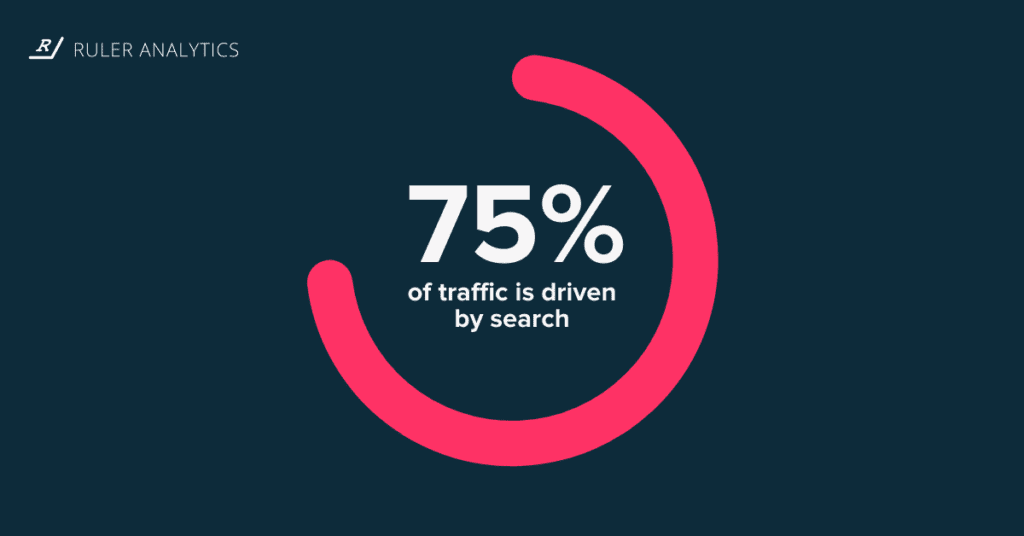
Think about it from the consumer perspective. You might not know what problem you need solving. So, if you’re looking for advice on how to best manage your assets, you might wind up realising you need an accountant or other money management consultant.
Or, you might know what you need. And instead, your search might be to find a reputable, local firm that you can contact for more information.
For this reason, local search is key for professional services.
And, being competitive in search is paramount to getting found by your prospective clients.
Do you struggle to attribute your clients back to your marketing? The issue with industries like professional services is that it requires lead generation. And as part of that, web visitors can convert via channels like phone call, email or in-store. Tracking these conversions through their full customer journey isn’t easy (though it is possible!).
Plus, professional services will tend to see longer customer journeys due to high competition.
We found that direct drives a conversion rate of 16.8% on average.
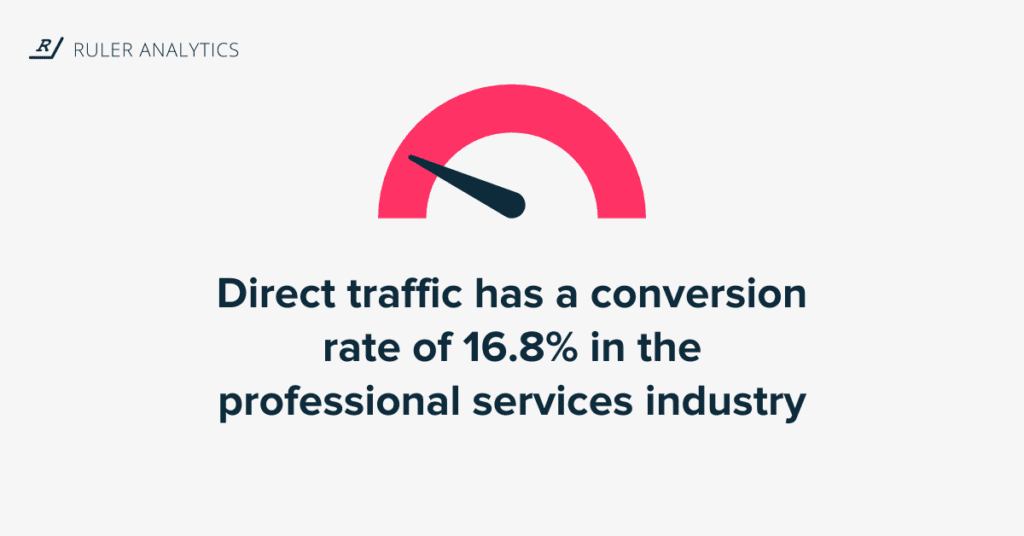
But what does direct really mean? To a marketer, very little.
It simply means a user has directly entered your URL into their search bar. But how did they originally hear about your company?
Was it word of mouth? Or perhaps organic? Without an attribution tool in place, you’re going to struggle to ever know. You’re also going to see direct take a much higher share of the figures without attribution as you won’t be able to get accurate data.
💡 Pro Tip
See how Ruler can link your closed revenue back to your marketing.
Conversely, we found that email marketing drives an average conversion rate of just 5.2%.
We also found that email marketing drove just 1.7% of traffic, so is this stat really surprising?
The issue with professional services is that you’re highly reliant on reaching the right person at the right time. Realistically, most prospective clients aren’t going to be interested in an email newsletter.
So your best bet for professional services marketing is to drive as many high-quality leads as quickly as possible through your website.
Email marketing slows this process down and the professional services industry doesn’t lend itself well to lead nurturing.
Our analysis found that for the professional services sector, organic search supported lead generation.
If you’ve got good SEO, then well, you’ve pretty much made it. In the professional services sector, organic search had a conversion rate of over 12.3%. That’s significantly higher than the average conversion rate of 9.1% found across all six channel types analysed.
So, we know that organic search helps drive traffic and conversions. This makes it a highly valuable channel for marketers in professional services.
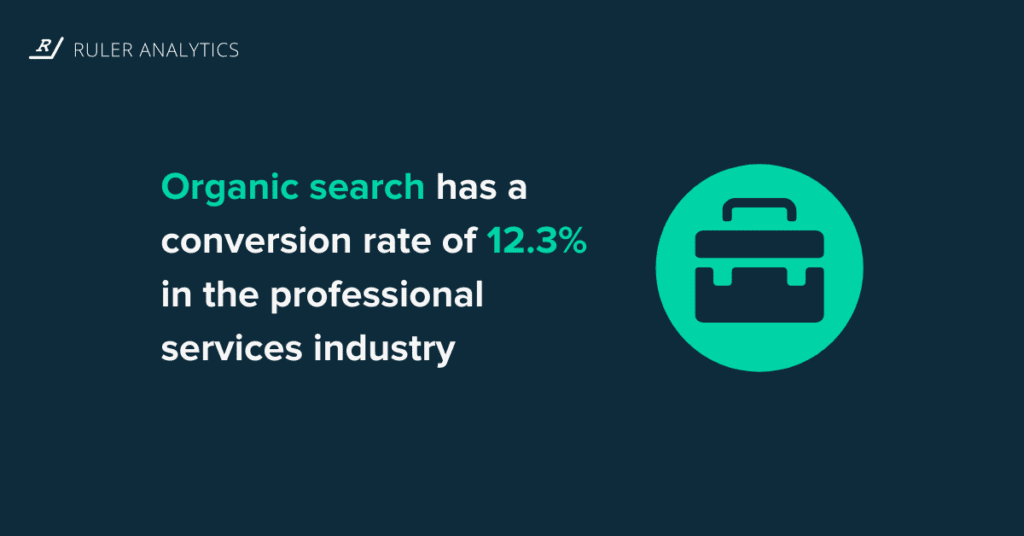
The professional services sector is highly competitive so marketers have a hard time getting cut-through online.
Due to the over-saturated market, many professional services are investing time and budget into getting traffic to their websites. But, in order to get cut-through in lead generation, marketers need to start focusing on which channels are driving sales, not just leads.
But, as far as conversion rates for lead generation go, how do you stack up to the industry average? On average, across all channels analysed, the professional services sector has a 1.7% conversion rate for inbound calls and form submissions.
However, we found that top performers in the industry were achieving conversion rates of 21.7%.
Every business is unique and so their lead generation tactics, and conversion rate will be unique too.
But, it’s always good to benchmark yourself.
Want to learn which channels are working particularly well for professional services marketing?
We’ve rounded up the average conversion rate for every marketing channel across the professional services sector.
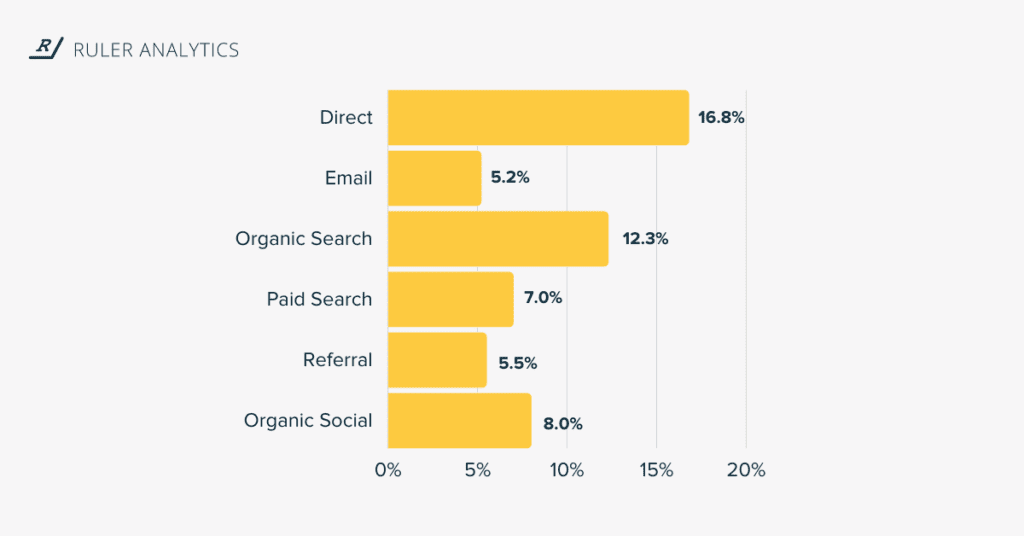
First up is direct with a conversion rate of 16.8% followed closely by organic search at 12.3%.
Next is organic social with a conversion rate of 8%, and paid search at 7%.
After that is referral with a conversion rate of 5.5%. Lastly is email marketing with a conversion rate of 5.2%.
But remember, these are just industry averages. What might work well for other professional services marketing teams might not work best for you.
Monitoring conversion rates in your industry is essential to better understanding how your marketing efforts are working by comparison.
Benchmarking yourself against your competitors, and also yourself, allows you to find new opportunities in marketing to further drive leads.
But remember, leads don’t guarantee sales. They might never convert into a new client.
So, while conversion rate is the perfect starting point, it’s not the endpoint.
The best way to report on your marketing efforts is by tying in revenue. Using revenue allows you to be measurable and actionable. And it’s all possible with Ruler Analytics.
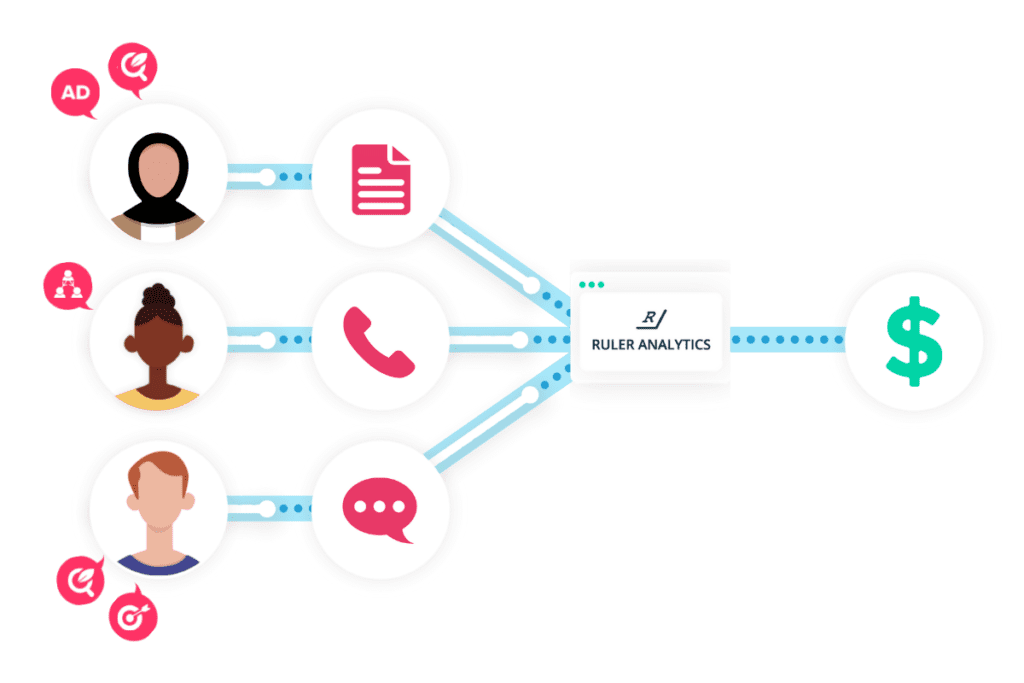
We support professional service businesses across the globe to measure and track leads and their touchpoints.
We feed the lead and marketing data into your CRM so that you can better understand where your leads are coming from. And even better, when your lead closes into a client (whether that takes months or years), Ruler will scrape the revenue from that user in your CRM and fire the data to your marketing apps.
This will allow you to definitively report on your marketing’s success and prove ROI and ROAS.
See the data in action, or download our guide to closed-loop marketing to see how it all works.
In the meantime, learn more about your competitors by downloading the full Professional Services Conversion Benchmark Report. You’ll be able to see the full data on how your competitors are using their channels and how their web visitors are engaging and converting.
With this report you’ll be able to answer questions like:
More importantly, benchmarking your activity allows you to understand how well you’re actually performing compared to other businesses in your industry and optimise your marketing for better results.